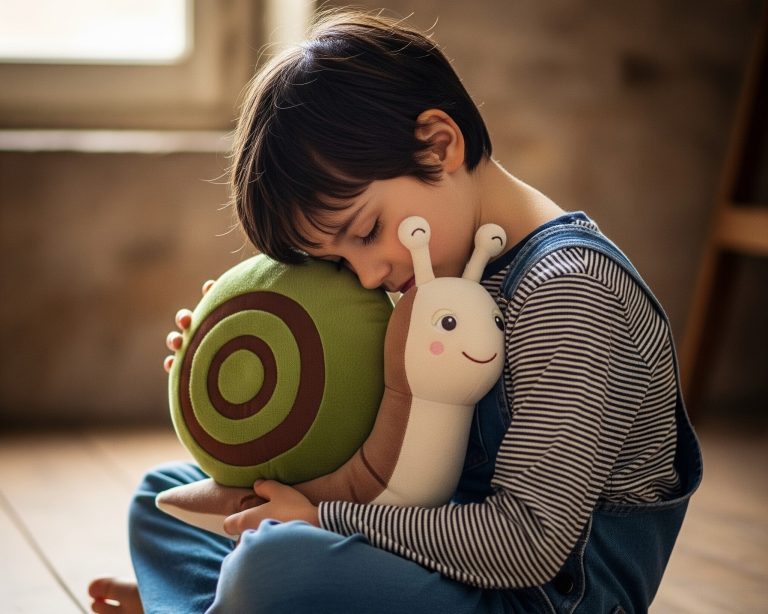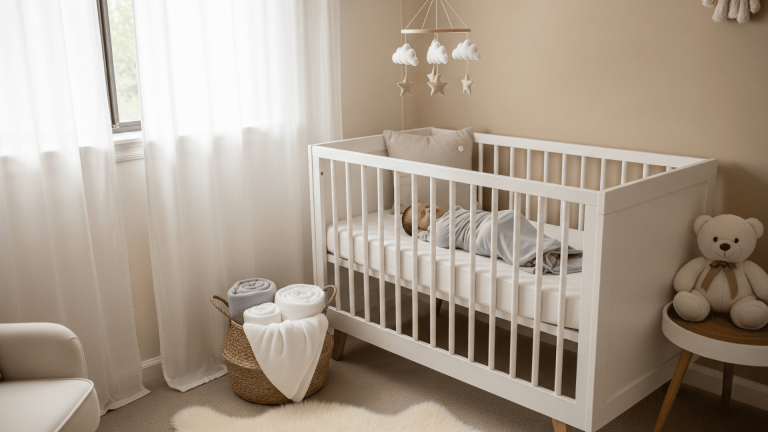Double Stroller vs Wagon: Which Is Right for Your Family?

When you’re juggling two little ones, getting around can feel like moving a small army. I remember standing in the baby store, staring at rows of double strollers and wagons, completely overwhelmed by the choices.
Both promise to make life easier, but they work in very different ways. The big question isn’t which one is better – it’s which one fits your family’s lifestyle.
I’ve talked to dozens of parents about their experiences and tested both options myself. What I’ve learned is that the “right” choice depends on your kids’ ages, where you live, and how you spend your time together.
Moving through city sidewalks or heading to a beach, understanding these key differences will help you make the best decision for your family’s unique needs and daily routines.
Double Stroller vs Wagon: What Makes Them Different
Think of a double stroller as your reliable daily driver. It’s designed for getting from point A to point B efficiently. You push it forward, kids face out or toward you, and everything feels familiar if you’ve used a single stroller before.
Wagons, on the other hand, are more like the family outing vehicle. Kids sit facing each other or sideways, you pull it behind you, and there’s usually tons of room for snacks, toys, and whatever else your crew needs for a longer outing.
The biggest difference I’ve noticed is how each one changes your walking experience. With a stroller, you’re walking naturally and can see exactly where you’re going. With a wagon, you’re constantly checking behind you, especially in crowded places.
What Matters When You’re Choosing a Wagon or a Stroller

One thing that I have realized through my experience is that there are just a few key factors that make or break the experience.
Focus on these main areas, and you’ll have a much clearer picture of what works for your family’s specific needs.
1. Weight Limits and Age Compatibility
Most double strollers can handle newborns up to about 50 pounds per seat, which usually gets you through age 4 or 5. If you have a baby and a toddler, strollers win hands down because they recline fully and accommodate infant car seats.
Wagons typically start around age 6 months when babies can sit up independently. But here’s where they get interesting – many can handle up to 110 pounds total, and some even go higher. I know families who use their wagon well into elementary school for special outings.
2. Comfort and Safety Features
Double strollers come with 5-point harnesses, adjustable canopies, and multiple recline positions. Your kids are secure, shaded, and can nap comfortably.
The safety features are tried and true because strollers have been around forever. Wagons usually have 3-point harnesses or simple lap belts.
Some newer models include canopies, but many don’t. The seating is more open and social, which older toddlers love, but it’s not ideal for naptime unless you get one with reclining seats.
3. Storage Space Reality Check
This is where wagons shine. Most have massive storage compartments underneath or even built-in coolers. I can fit a full day’s worth of snacks, toys, diaper bag, and jackets without breaking a sweat.
Double strollers vary wildly in storage. Side-by-side models often have tiny baskets that barely fit a purse. Tandem strollers do better, but you’re still limited compared to a wagon’s cargo capacity.
4. Getting Around: The Maneuverability Factor
Pushing a double stroller through narrow store aisles or crowded sidewalks takes practice, but once you get the hang of it, it’s pretty intuitive.
Side-by-side models are wider but turn easily. Tandem strollers are longer but fit through standard doorways.
Pulling a wagon feels awkward at first, especially around corners. You have to think ahead more and can’t make quick direction changes. But on open paths or at the park, wagons roll smoothly and feel less cumbersome than wide strollers.
5. Folding and Car Trunk Space
Most double strollers fold up, though they’re still bulky. Lightweight umbrella-style doubles can fit in smaller trunks, but full-featured models need serious cargo space.
Many wagons don’t fold at all, or they fold into still-large rectangles. This was a deal-breaker for some families I know who drive smaller cars. However, some newer compact wagons do fold surprisingly small.
A Quick Comparison: Double Stroller vs Wagon
After all the details, sometimes you just need a straightforward breakdown. This quick reference helped me cut through the noise and focus on what matters for day-to-day life with two kids.
| Feature | Double Stroller | Wagon |
|---|---|---|
| Best For | Newborns, young infants, daily errands, shopping, air travel, and tight spaces | Beach trips, parks, zoos, multiple older toddlers, hauling lots of gear |
| Age Range | Suitable from birth (with recline and car seat compatibility) up to about age 4–5 | Usually for babies 6 months+ who can sit up; fits kids up to elementary age |
| Comfort & Safety | 5-point harnesses, reclining seats, full canopies, nap-friendly | Mostly 3-point harnesses or lap belts, more open seating, and some models offer canopies |
| Storage Space | Small to moderate baskets; varies by model | Large storage capacity; often extra compartments and coolers |
| Maneuverability | Easy to push, works well in narrow aisles and crowded spaces | Pulling motion takes practice, best for open spaces |
| Folding & Transport | Folds up but can still be bulky; lightweight models fit smaller trunks | Some fold compactly, many stay large; check trunk space before buying |
| Cost Range | ~$150–$800+ depending on features and brand | ~$200–$600; longer lifespan offsets cost for some families |
| Ideal For | Urban living, errands, travel, mixed-age siblings, including infants | Outdoor fun, multiple toddlers, carrying extra gear, older kids |
When Double Strollers Are Your Best Friend

Double strollers shine for daily routines and urban life. When I need to run errands with both kids, visit grocery stores, or catch public transportation, the stroller wins every time.
It fits through doorways, handles curbs smoothly, and keeps both kids contained and facing forward. Air travel is another clear win for strollers.
Many gate-check easily, and you can push them right up to the plane. Try explaining to airport security why you need to bring a wagon through TSA.
If you have an infant and a toddler, there’s no contest. The baby needs a fully reclining seat and a 5-point harness, plus you’ll want that familiar stroller-pushing motion when you’re sleep-deprived and operating on autopilot.
Tight urban spaces also favor strollers. Narrow sidewalks, crowded museums, and packed festivals are much easier to move through when you’re pushing rather than pulling your kids around.
When Wagons Take the Win

Beach days changed everything for our family once we got a wagon. Sand and strollers are natural enemies, but wagons roll right over them. Plus, we could pack all our beach gear, snacks, and tired kids for the trek back to the car.
Zoo trips and amusement parks are where wagons show their worth. Kids can climb in and out easily, face each other to chat, and there’s room for all the souvenirs and snacks that accumulate during a long day out.
Multiple older toddlers (think ages 2-5) often prefer wagons because they feel less restrictive. Kids can turn around, point at things, and interact more naturally than when they’re strapped into stroller seats facing forward.
Neighborhood walks and park visits also work great with wagons. Kids can hop out to collect leaves or rocks, throw their treasures in the wagon, and climb back in when they get tired.
What Other Parents Think
I’ve spent way too much time in parent Facebook groups reading debates about this topic. The most common regret I see is parents who bought a double stroller first, then ended up getting a wagon later anyway. They wish they’d just started with the wagon.
But plenty of parents go the other way, too. One mom told me she loved her wagon for the weekend, but found herself using a lightweight double stroller for everything else because it was just more practical for daily life.
The parents who seem happiest are the ones who really thought about their lifestyle first. City families with small cars tend to love their compact double strollers. Suburban families who do lots of outdoor activities usually prefer wagons.
Making the Right Choice: What’s Best for Your Family?
The truth is that there’s no universally right choice. Both options can make life with multiple kids easier, but they excel in different situations.
Think honestly about your daily routine. If you’re mostly running errands, a double stroller wins. If you’re always at parks, beaches, and outdoor picnics, a wagon is probably better.
Consider your kids’ ages too. Babies need strollers, but older toddlers often prefer the freedom of wagons. Test both options in stores if possible. Borrowing from friends works too.
Some families end up with both, others make one work for everything. The key is picking something you’ll use consistently. Kids grow fast, so don’t stress about making the “perfect” choice. Either option can help your family get out and find together.
What’s been your experience with double strollers or wagons? Share your thoughts in the comments below – other parents would love to hear your real-world insights!






